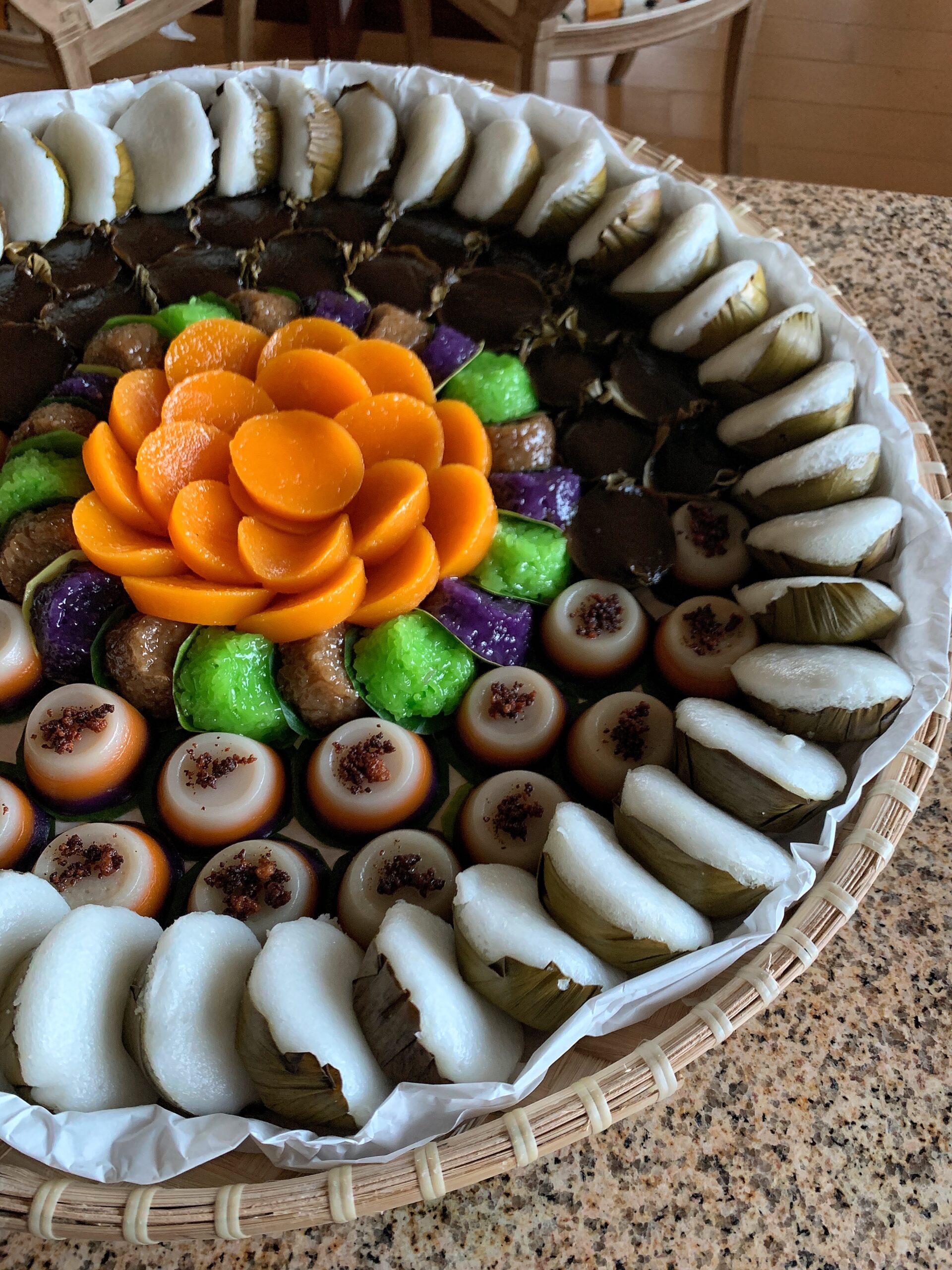
All About the Layered Sticky Rice Cake.
The Christmas season is here and that means enjoying all the seasonal sweets – like kakanin, or sticky rice desserts, from the Philippines. Read about one of the most iconic ones, the sapin sapin history and its origins.
Sapin Sapin History & Origins
Sapin sapin is a popular sticky rice dessert from Abra, a northern province in the Philippines with multiple colored layers. It is often served during special occasions, including the Christmas season (which is the world’s longest running starting from September 1 until the Baptism of Jesus in second weekend of January).
The dessert is made from glutinous rice, coconut milk, and sugar, with flavorings and colorings to highlight the layers. There are typically 3 layers: the purple layer made from ube, a yellow or orange layer made from either corn, langka, or achuete, and white from the plain coconut milk. Upon serving, the cuts of the dessert are topped with caramelized or toasted grated coconuts.
“Sapin” meaning blanket or covering, and “sapin sapin” meaning sheets or layers, which perfectly describes the sticky rice cake. It also perfectly captures the culture with its past of indigenous peoples, Malay trade, Chinese immigrants, and Spanish, American, and Japanese colonizers. The people are as multi-faceted as the multi-layered dessert.
Sign up for my newsletter on the sidebar for blog updates and my travel insider tips! And, check out my vlogs on YouTube!


